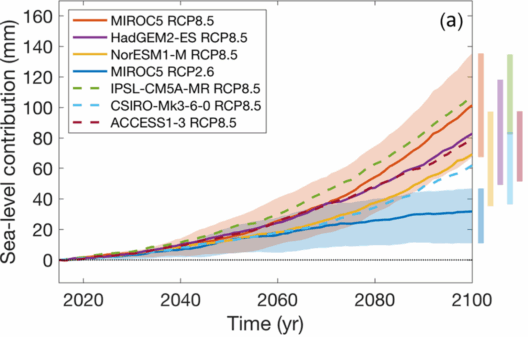Global warming represents one of the most pressing challenges of our time, with far-reaching implications for both our environment and future generations. However, combating it may not require drastic shifts in lifestyle. Small, manageable changes can collectively lead to substantial reductions in greenhouse gas emissions. Understanding the aesthetic appeal and profound impact of these modifications elevates their significance. Here’s how simple adjustments in daily routines can contribute to a healthier planet.
Transforming Transportation: The Path to Sustainable Mobility
Transportation is a major contributor to global warming, primarily through the emission of carbon dioxide and other greenhouse gases. Reducing our reliance on fossil fuel-powered vehicles can be both achievable and intriguing. Exploring alternative modes of transport emphasizes the beauty of our surroundings while minimizing carbon footprints.
Opting for public transportation is an effective change; buses, subways, and trains can dramatically reduce the number of vehicles on the road, thereby decreasing emissions. Carpooling also presents an admirable solution; sharing rides not only diminishes greenhouse gases but fosters community connections. The frequency of these shared journeys can transform mundane commutes into opportunities for social interaction.
Cycling and walking, in particular, allow us to engage intimately with our environment. The simple act of pedaling or strolling promotes physical well-being while lessening our carbon output. Moreover, urban areas offering dedicated cycling lanes and pedestrian pathways create an aesthetically pleasing atmosphere that encourages outdoor exploration. Investing in a high-quality bicycle or comfortable walking shoes encompasses both health benefits and environmental consciousness.
Embracing Energy Efficiency: Illuminating Change
The vitality of energy consumption in our homes cannot be overstated. Housing accounts for a significant portion of total greenhouse gas emissions. By embracing energy-efficient practices, we illuminate a pathway toward sustainability that is both practical and impactful.
One compelling adjustment is the use of LED lighting. These bulbs consume significantly less energy than traditional incandescent bulbs while lasting longer. Furthermore, their array of vibrant colors can enhance the ambiance of any space, emphasizing the aesthetic appeal of energy-saving technology. Adopting smart home devices that regulate energy use based on occupancy patterns or time schedules adds another layer of sophistication and efficiency to our living environments.
Consider incorporating renewable energy sources. Install solar panels, if circumstances allow; this investment not only cuts down on electricity bills but also contributes to cleaner air and reduced reliance on fossil fuels. In so doing, individuals can take pride in harnessing the sun’s inexhaustible energy, transforming their homes into beacons of sustainability.
Conscious Consumption: The Art of Sustainable Choices
What we choose to consume carries immense weight in the fight against global warming. Conscious consumption encourages individuals to evaluate the lifecycle of products, from their creation to disposal. Making informed choices on food, clothing, and other essentials can evoke a sense of responsibility and connection to our planet.
Opt for locally sourced and organic foods; these not only support local farmers but also minimize transportation-related emissions. Seasonal eating embodies the philosophy of harmony with nature, where meals reflect the cycles of the Earth. Engaging in community-supported agriculture (CSA) allows individuals to procure fresh produce while fostering meaningful relationships within their local ecosystems.
Another dimension of conscious consumption involves reducing single-use plastics. Employ reusable bags, containers, and utensils to minimize waste and physical clutter in landfills. This practice accentuates the delicate balance between functionality and aesthetic appeal. By opting for beautifully crafted, reusable products, individuals can express their commitment to sustainability while enhancing their lives aesthetically.
Adopting a Minimalistic Lifestyle: Less is More
The philosophy of minimalism champions the idea that less can indeed constitute more. Reducing clutter fosters simplicity, tranquility, and a greater appreciation for our possessions. By consuming mindfully and prioritizing quality over quantity, individuals can alleviate the environmental burdens associated with mass production.
Engaging in a decluttering process paves the way for mindfulness and gratitude. Each discarded item can evoke reflection on its purpose and the energy expended in its creation. This practice not only yields spacious living areas but also inspires intelligent purchasing decisions in the future, as individuals become attuned to their true needs versus societal pressures.
Moreover, minimalism invites the exploration of sustainable alternatives when acquiring new items. Sustainable fashion brands, for instance, highlight the intersection of ethical production and aesthetic appeal. Donning clothing that aligns with one’s values not only supports responsible manufacturing but serves as an expression of individuality and consciousness.
Collectively, these small yet impactful lifestyle modifications can catalyze significant change in the battle against global warming. By transforming transportation methods, embracing energy efficiency, practicing conscious consumption, and adopting a minimalistic lifestyle, individuals can weave their ideals into the fabric of everyday life. The choices made today resonate profoundly, fostering a vibrant planet for generations to come. Ultimately, the allure of living sustainably goes beyond mere obligation; it embodies a deeper connection to the world around us, creating an aesthetic and ethical tapestry that enriches lives and honors the Earth.








